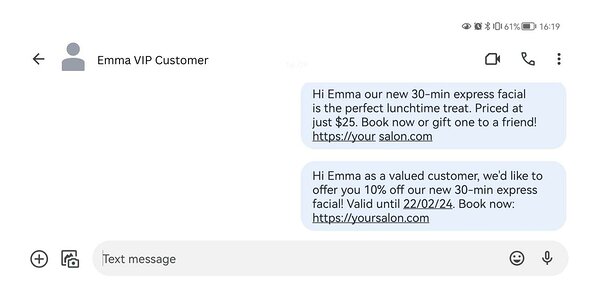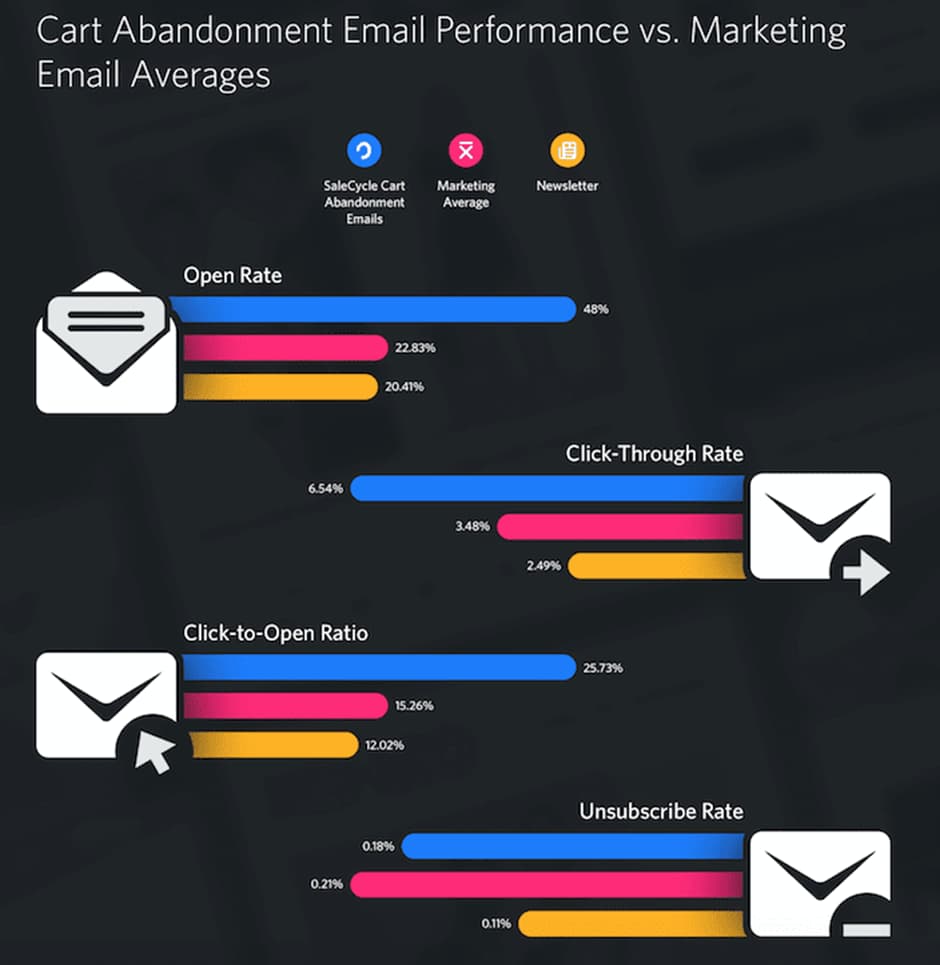Getting your brand noticed amid a competitive landscape requires deep connections with your target audience. But how can you cut through the noise of other businesses and brands trying to achieve the same goal? A good starting point is interacting with your audience according to their preferred communication channels – with valuable content they won't want to ignore.
However, reaching out on just one or two channels isn't enough if you want to grow your business substantially. Research suggests that more than half of B2C customers use three to five channels whenever they make a purchase or resolve a request. It's vital, therefore, to utilise and integrate several channels for marketing and communications.
In this article, find out what an integrated marketing campaign looks like, its benefits to your business, and how to get started with setting one up.
What is an integrated marketing campaign?
An integrated marketing campaign combines multiple channels for a unified strategy and consistent brand experience. Taavi Rebane, Messente's Head of Marketing, explains:
"Integrated marketing can leverage both online and offline channels like SMS, OTT messaging, email, social media posts, PR, in-store activity, billboard advertising and print. Rather than utilising these channels independently and sending one type of campaign via email and another by SMS, you take a holistic approach and have the same messaging circulated across different channels. This helps provide maximum impact and ultra-clear messaging for the target audience."
Example integrated marketing campaign
Imagine a beauty salon wants to promote a new treatment (a 30-minute express facial) to new and existing clients. To get maximum impact and bookings, the salon decides to use the following marketing channels:
A dedicated landing page on the company website explains the benefits of the express facial.
An SMS/MMS campaign to existing clients at the beginning of the week, linking to the landing page.
An email campaign to the beauty salon's regular newsletter subscribers, linking to the landing page.
Posters and flyers inside the salon for existing clients to pick up and take away.
A social media campaign, including a video reel demonstrating the key parts of the facial, which links to a booking page.
A final SMS/MMS campaign to existing clients – those that interacted with the first text by clicking the link – at the end of the week, with a special 10% discount.
The benefits of integrated marketing communications
A strong integrated marketing strategy helps you deliver a cohesive, consistent message and meet your customers where they are. Here are some specific advantages of combining different marketing channels in this way:
1. Consistent messaging across channels
Integrated marketing communication assures zero confusion for your target audience - the message they receive is clear and consistent, in one brand voice, regardless of the channel where it's being delivered. The crux of the message is repeated in different formats, enhancing its impact on your audience and increasing their understanding of the action you want them to take.
2. Stronger brand identity
Integrated marketing can help you build a trustworthy and reliable brand identity. Not only does this strategy help you deliver a cohesive brand image across multiple channels and touchpoints, but it also gives you more control over brand storytelling. You can ensure every piece of marketing, from social media ads to SMS campaigns – even product packaging – is harmonious and amplifies your message.
3. Better brand awareness and recognition
Using multiple channels in combination allows you to reach the widest possible audience, giving you greater brand visibility. Maintaining a consistent presence helps consumers recognise your brand and keep it front of mind, enhancing the likelihood of brand recall (being able to reel off your brand name without prompts when considering your product or service category).
4. Exceptional customer experience
Consumers are hit with a volley of adverts on a daily basis – across various channels, devices, platforms and formats. This media fragmentation makes it hard to reach audiences effectively. However, integrated marketing helps deliver a strong branding message that resonates with customers. It ties everything together, providing a seamless experience. This can build loyalty and result in higher customer satisfaction rates.
5. Improved customer relationships
By connecting with customers on multiple channels and via different formats, you’ll increase the chances of your brand message being heard – and remembered. Consistent marketing interactions will improve brand awareness and help customers develop a positive attitude towards your brand. A nice side effect of integrated marketing is you'll boost engagement levels, as customers can respond to your campaigns via the channels they like to use most.
6. Higher conversion
Your message has a better chance of being seen via multiple channels, while a smooth brand experience can push prospective customers closer to conversion. If you use text messaging as part of your efforts, conversions should increase multifold. One study suggests sales prospects who receive well-timed SMS messages during the sales process convert at a rate 40% higher than prospects who don't get them.
The key characteristics of integrated marketing campaigns
Effective integrated marketing campaigns have the following characteristics in common:
Unified messaging – brand voice and key messaging are aligned across all marketing channels for a cohesive customer experience.
A brand story – a compelling narrative that makes a brand unique and memorable and resonates with the audience.
Dissemination via multiple channels – including digital marketing channels and traditional media.
Good timing and synchronisation – successful integrated marketing involves reaching the right people, with the right message, on the right channel, at the right time.
Adaptability – the best campaigns are flexible and can be altered according to performance results while staying aligned with a business's vision and key objectives.
How to set up an integrated campaign
The best integrated marketing campaigns follow a step-by-step formula, starting with defining objectives and ending with proper evaluation:
Define your goals
Consider the primary goal of your campaign. That might be to boost brand awareness or generate more leads. Or to acquire X number of new customers or achieve higher customer satisfaction rates. Or to increase sales for a particular product or increase customer lifetime value. Whatever your campaign goal, check it also ties into your long-term business objectives.
Craft your brand message
Figure out exactly what you want your target audience to know. Then, think about how that message might work across different marketing channels. Try turning the message into a story (as stories help make connections). Ensure that it aligns with your brand's core values and identity.
Select relevant channels
Next, select the channels you want to use for your campaign. You don't have to use every channel, but choose the ones your target audience prefers according to their past and expected behaviours. For example, if you have an older audience, they might not be big social media users. Direct mail, SMS or TV advertising might be better channels to use. Likewise, a younger audience may receive your message more effectively through TikTok or Instagram.
Create campaign content
Create content appropriate to the channels you're using – prepare TV ad scripts, write SMS copy, brief videographers, set up email workflows for drip campaigns, etc. The aim is to create similar content for each channel to make the messaging seamless. Repurpose what you can to reflect a united message for all channels. Don't lose your brand identity along the way – keep the tone, style, voice and visuals consistent.
Launch
Decide how to launch your campaign on each channel. Each section of your campaign must be well-timed and synchronised for maximum impact. Be ready to press the button ahead of deadlines and schedule messages where possible to avoid last-minute panic or campaign mismanagement.
Analyse and improve
Gather and analyse campaign performance data from the channels you use. Metrics like reach, views, open rate, CTR, response rate and number of sales will help you identify whether your efforts have been successful. Refine future integrated campaigns based on these insights.
Source: ActiveCampaign
You may get real-time feedback on specific channels where it's easy and quick for your audience to respond, e.g. social media, SMS, instant messaging and your website (via reviews). Adapt to any critique or positive observations quickly.
Achieve better results all around with integrated marketing
An integrated marketing approach will help your business build brand recognition through unified and seamless messaging. It'll increase your audience reach and give you a better chance of getting your message heard and remembered. It can also help develop positive customer perceptions and brand loyalty, with customers more likely to recommend your business to others through word-of-mouth. Integrated marketing is also very efficient as you can repurpose content and streamline the production process too.
Follow the steps detailed above to achieve a successful integrated marketing campaign and choose your audience's preferred channels. SMS is an excellent marketing channel to use as part of your efforts as it offers remarkably high open and response rates, and it's familiar to virtually everyone with a mobile phone, irrespective of demographic or technical ability.
Get started with Messente's business text messaging service today.







